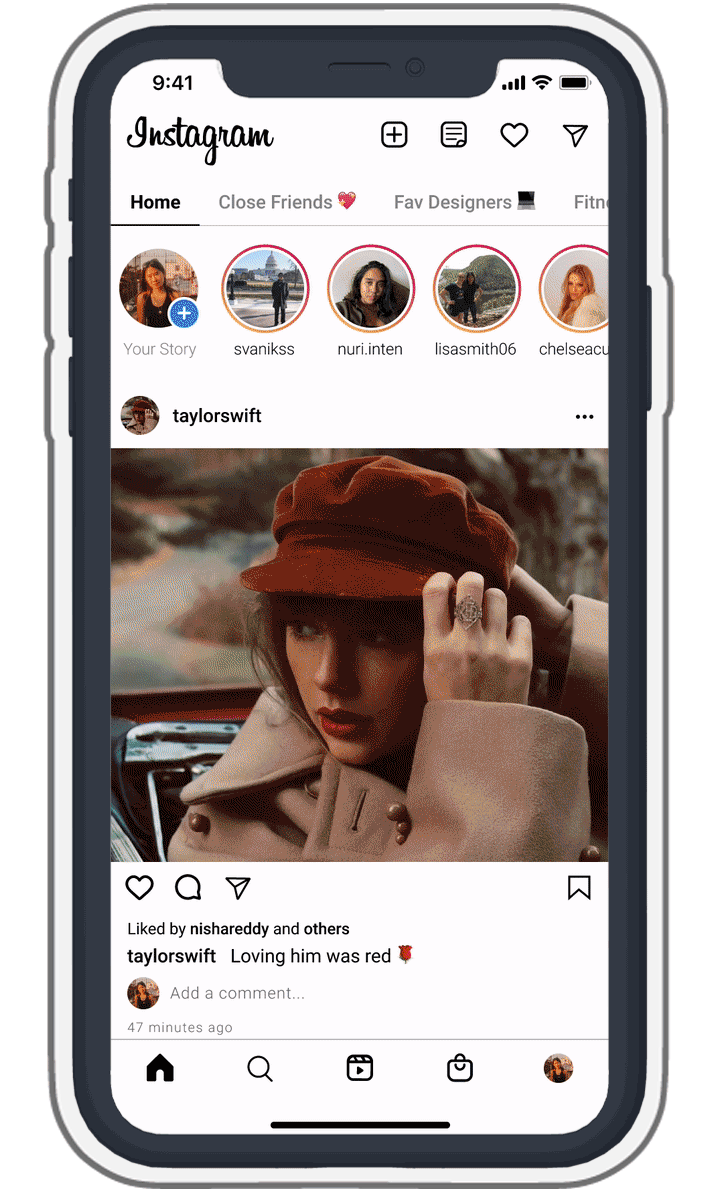
Timeline
3 months (May-July 2021)
Role
Product Designer
Team
Jennifer Wong (Mentor) & fellow bootcamp students
The content that people view on Instagram, despite being based on who you follow or what you view, isn’t always relevant at a given time. For example, if someone you follow posts content you aren’t emotionally prepared for, such as violent posts, you could be in a worse mental state.
The basis of social media is to create feelings of connection, but this problem of content irrelevance is driving people away from each other and creating a harmful environment.

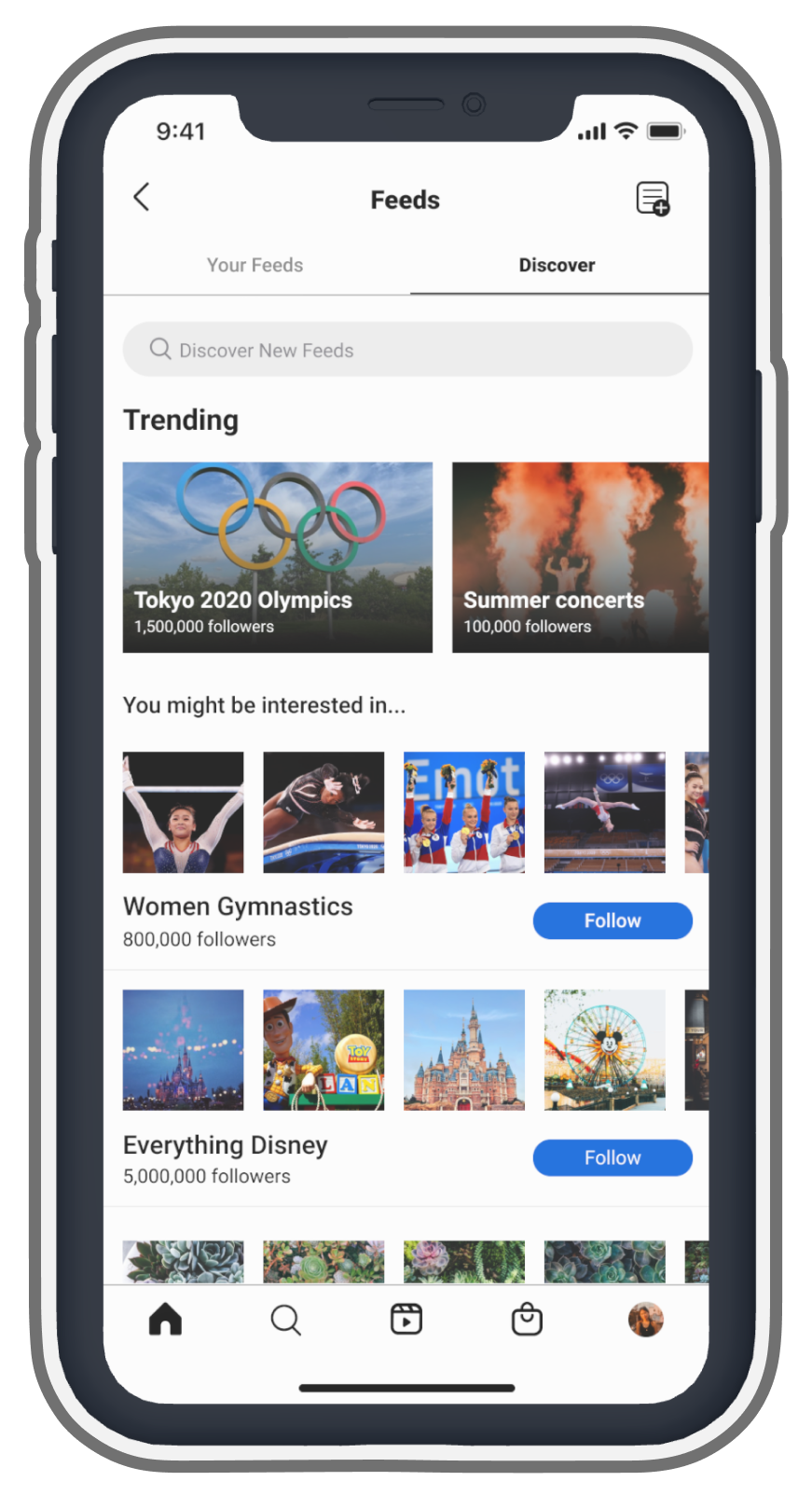
If you're trying to find some inspiration or want to look into something you're interested in, you can discover existing feeds created by other users and follow them

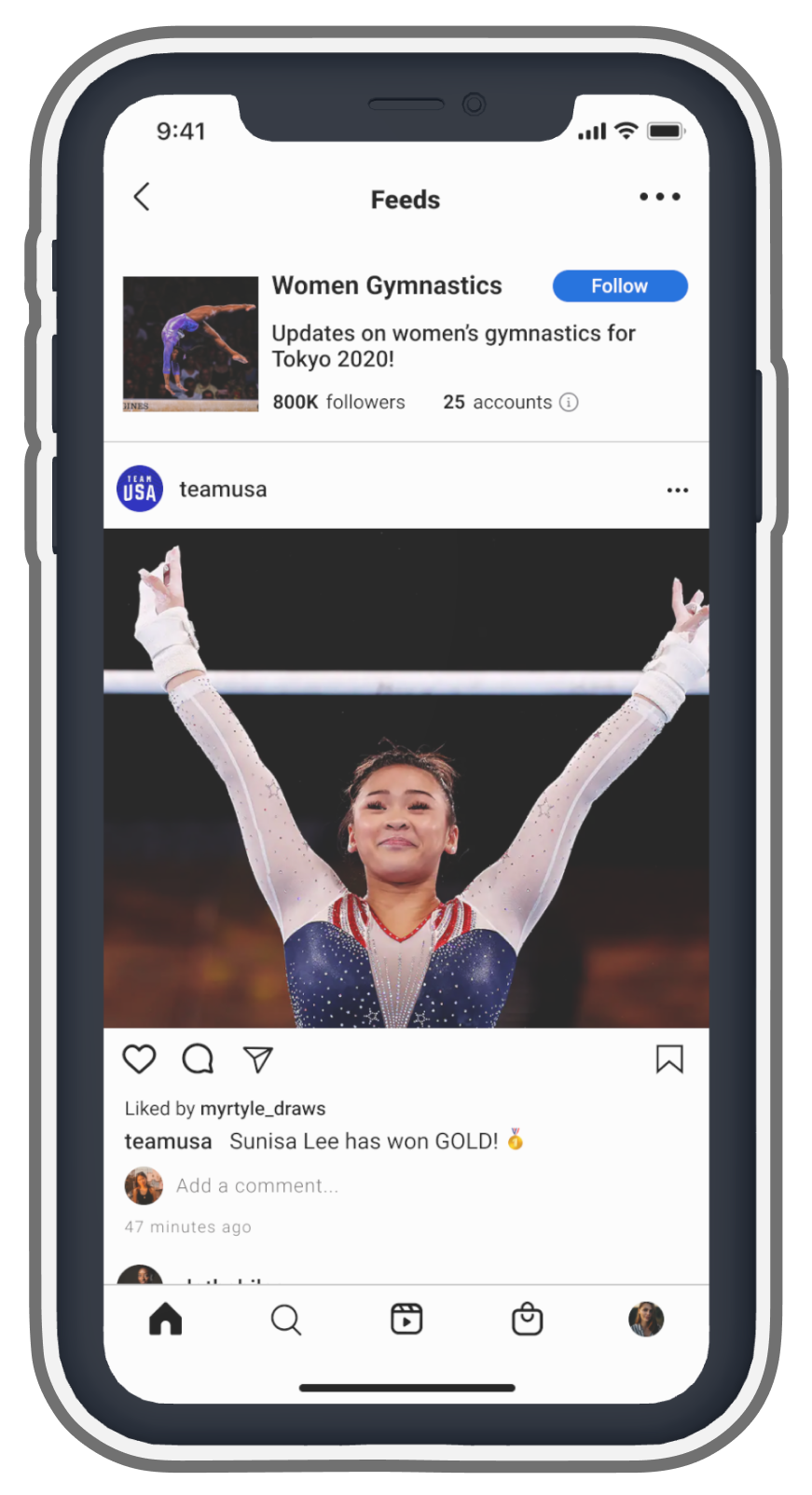


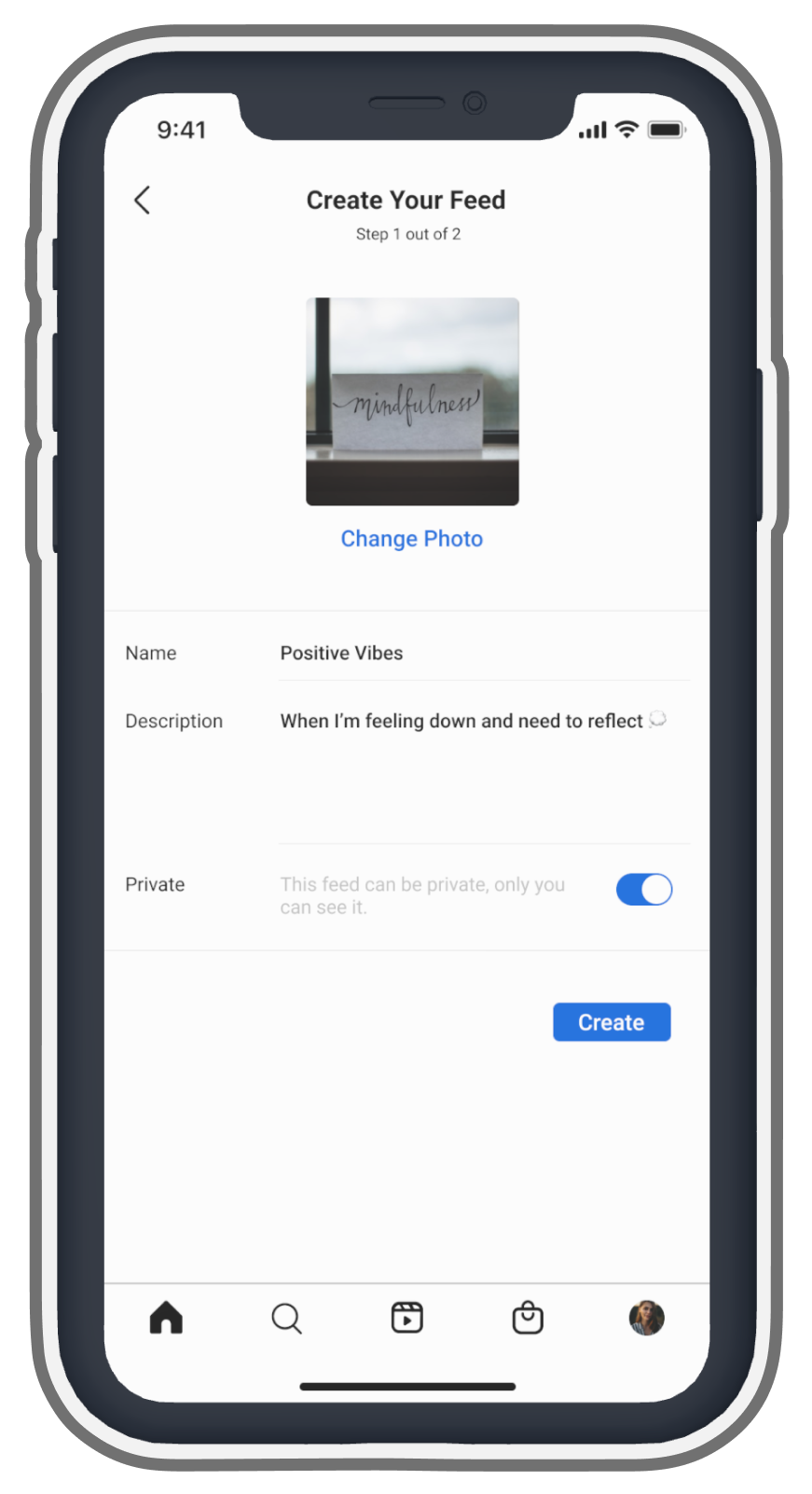
Create a feed with a photo, name, and description. Then, select accounts that you want to see based on a common category or theme.

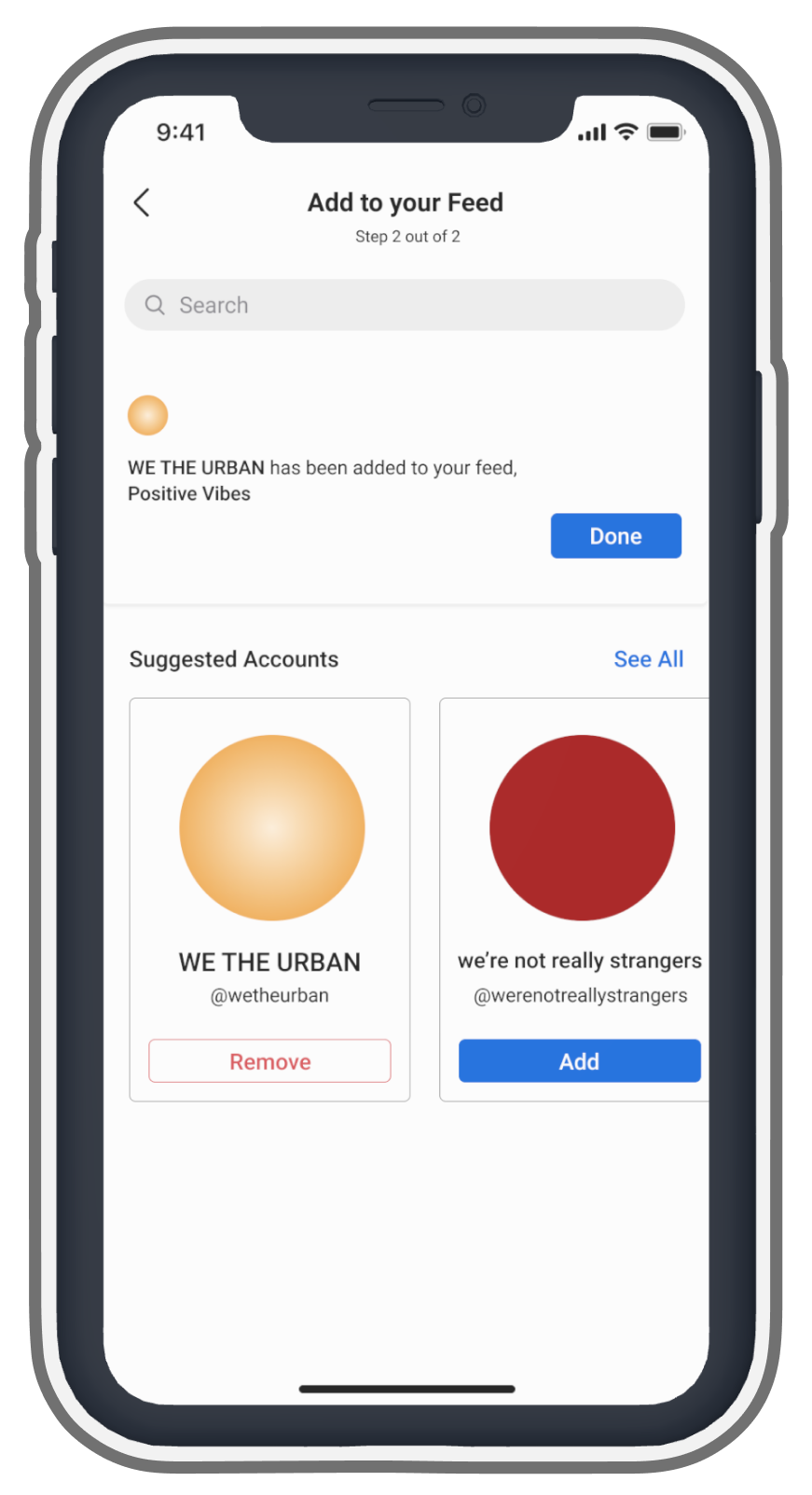





You know you best – curate your homepage to see certain accounts and content you enjoy in addition to the traditional algorithm view.


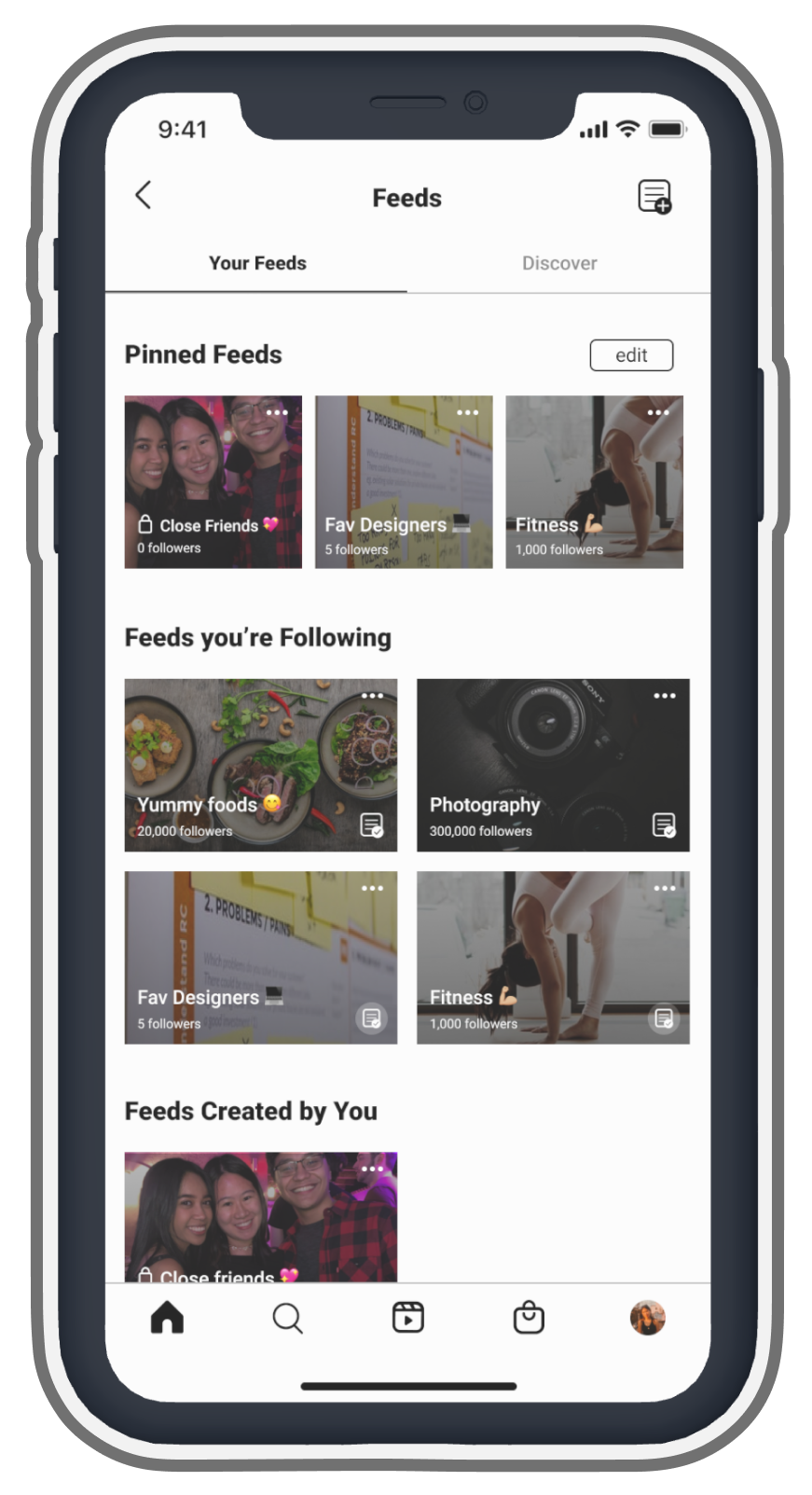

Organize & manage all your feeds in one place. Here, you can control which feeds are pinned to your homepage
See more comments about the design here
I interviewed 5 active social media users & identified the following patterns:

People risk experiencing negativity and unwanted feelings when they view content
People feel stressed out and anxious with repeated posts about hate violence, and negativity

People feel overwhelmed by high volumes of information
Too much information causes people to experience information overload

People feel like their time is being wasted by social media
People expressed frustration in how they spend their time on social media where it feels like they’re not seeing anything meaningful
Instagram is perceived as a harmful product, as exemplified by documentaries like The Social Dilemma. By reducing emotional friction, people can develop healthier habits and be in a healthier mental state.

Allow people to have more autonomy over the content they view
Give people the autonomy to regulate their own content so that they can manage how they spend their time on Instagram, as well as in relation to how they’re feeling

Give people more context on how they're spending time on Instagram
Give a way for people to be more mindful of their time on Instagram & how they can make it more productive, thus reducing negative feelings
Instagram is already in the process of helping their users be more mindful while on their app. I decided to focus on providing autonomy to address the greater need of controlling sporadic and unwanted content that causes users to experience emotional friction.
I explored various levels of autonomy in relation to how they would reduce emotional friction for users. The ideas ranged from least to most autonomy, each of which took into consideration the effects of giving users too many or too few choices.
Option A: Update algorithm to show you what you want
Inspired by Tinder, this concept explores the idea of recalibrating the feed algorithm when you aren’t seeing content that you are interested in. This option has the least user autonomy.

Option B: Filter homepage
This idea allows the user to filter their feed homepage to see specific content. This option gives the user moderate autonomy.
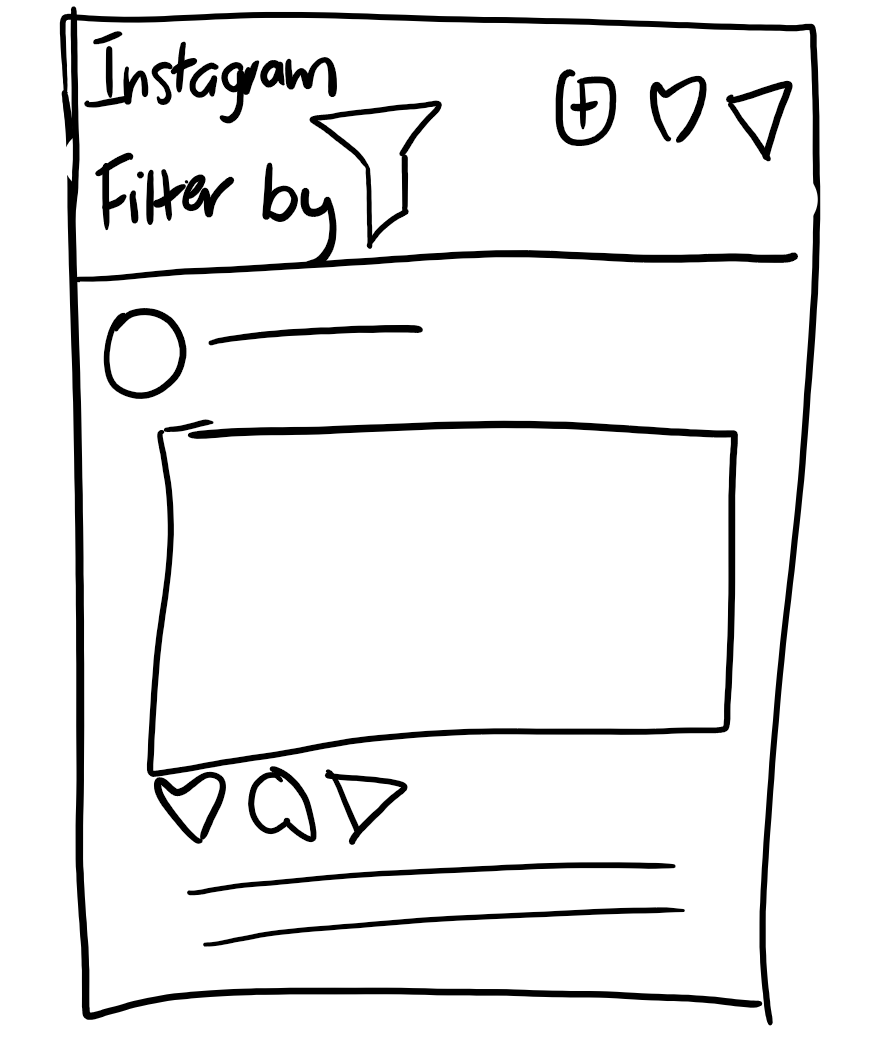
Option C: Create custom feeds homepage
This idea allows a user to create their own feeds by selecting accounts they’d like to see in that feed in order to see more curated content. This option gives the user the most autonomy.
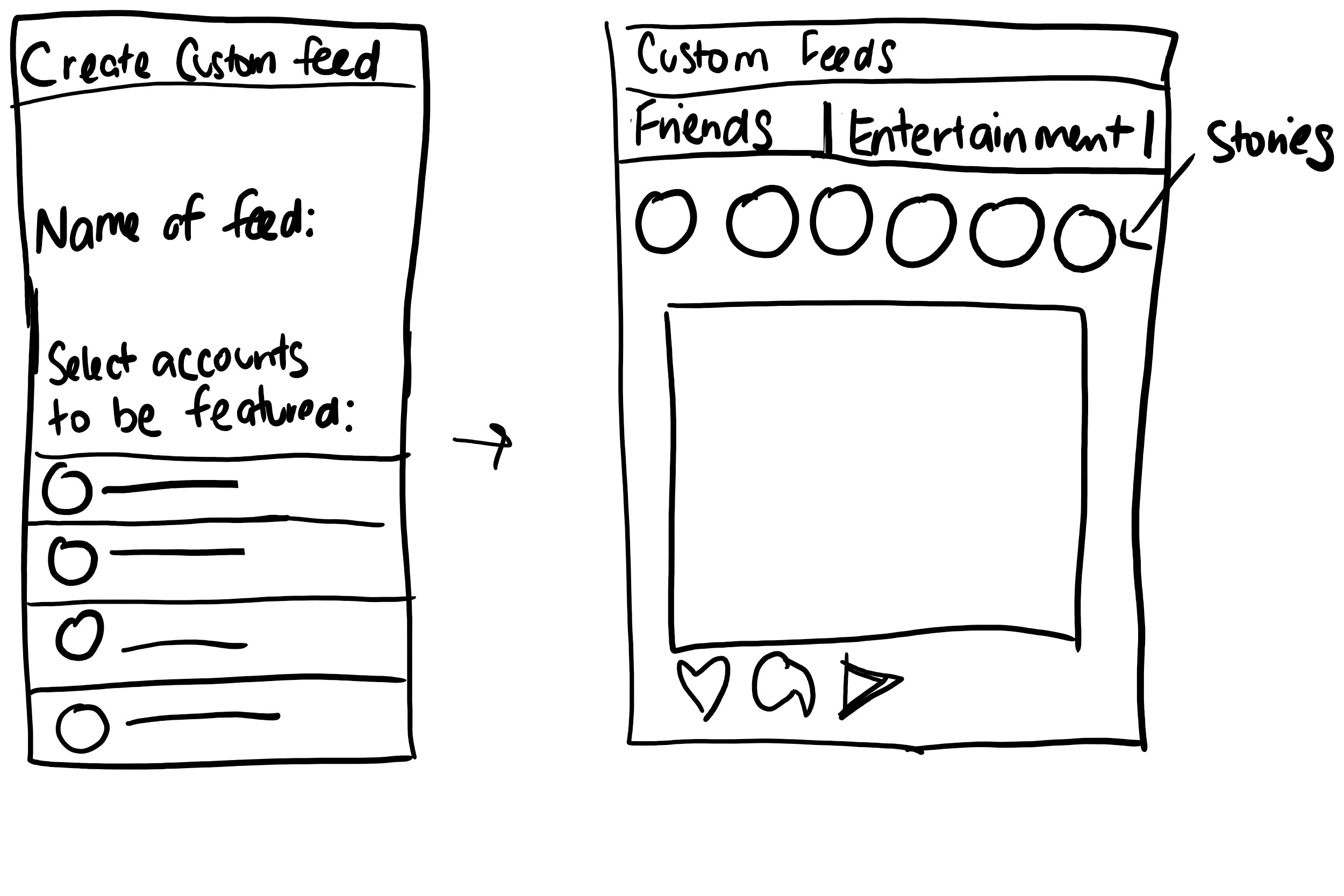
Option A had too much automation that didn't give users enough control to regulate content, while option B limited them to preset options which would not necessarily increase content relevancy as directly at option C.
To avoid things feeling too manual in option C, I added a discover page to follow existing feeds in further iterations.
Now that I had an idea of the levels autonomy that I could pursue, I moved forward exploring how to organize content more efficiently.
Option 1: Categorize feed concept
Inspired by Twitter’s explore page, this is a wireframe of how categories could look in Instagram.
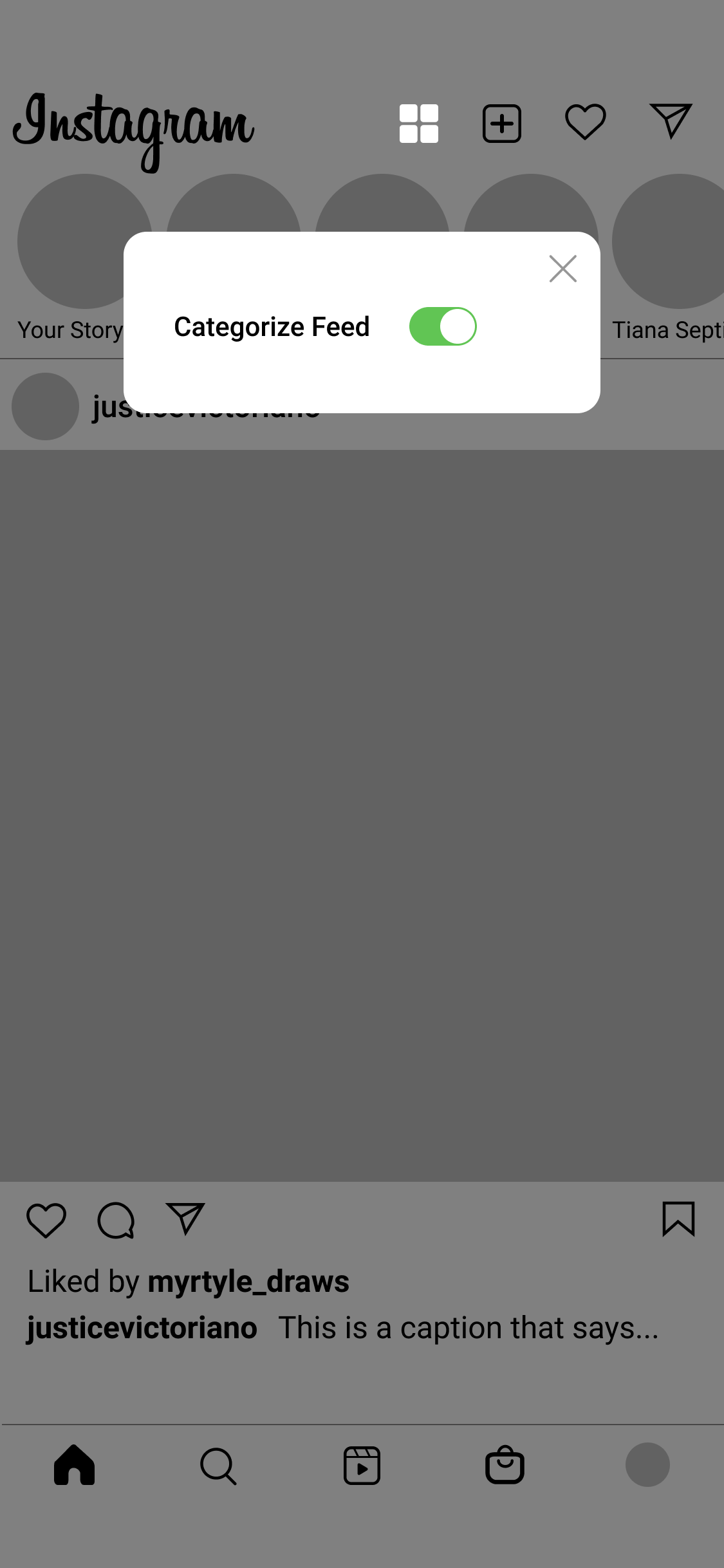
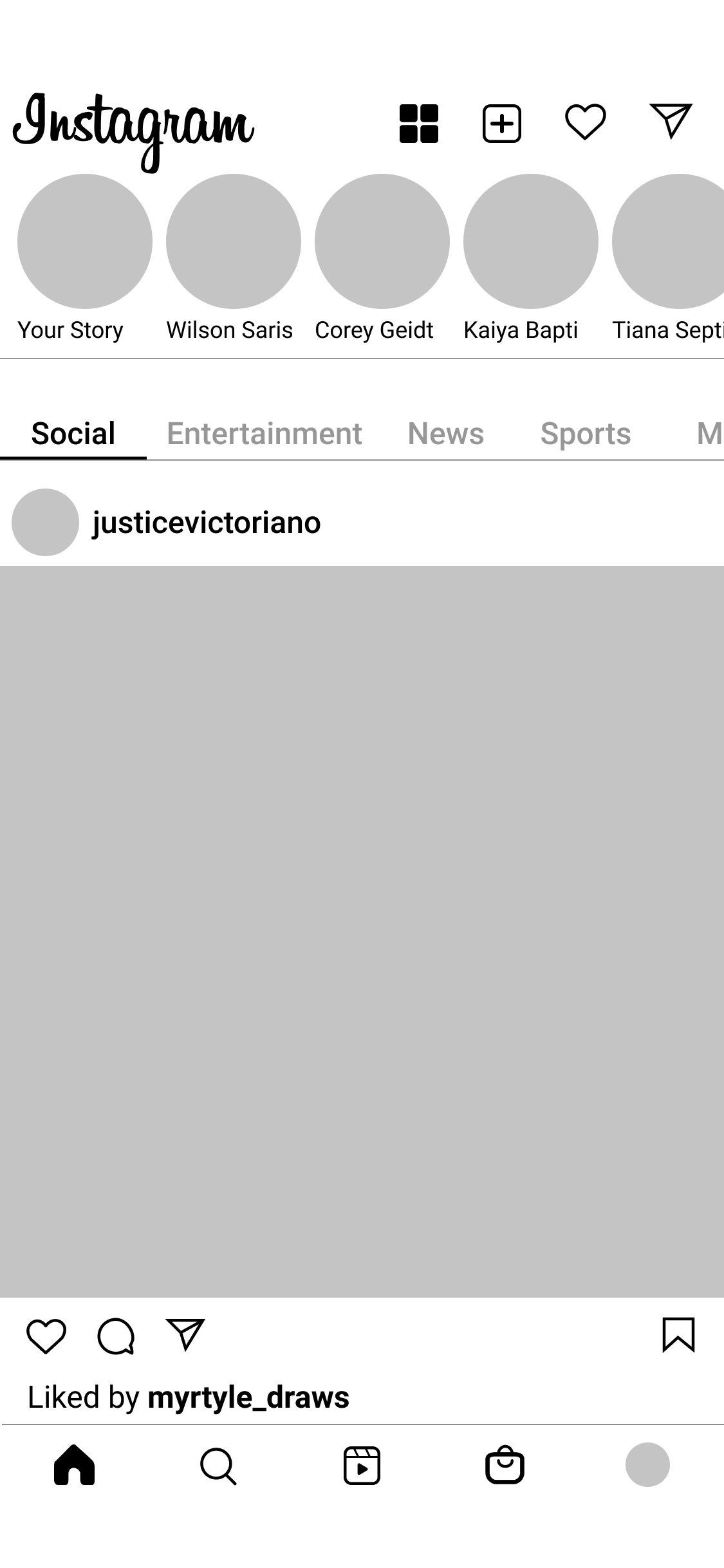
Option 2: Customize feed concept
These are of 2 different ways to lay out a page a part of the custom feed concept; one empahsizes photos to represent the feeds while the other shows them in a list format.
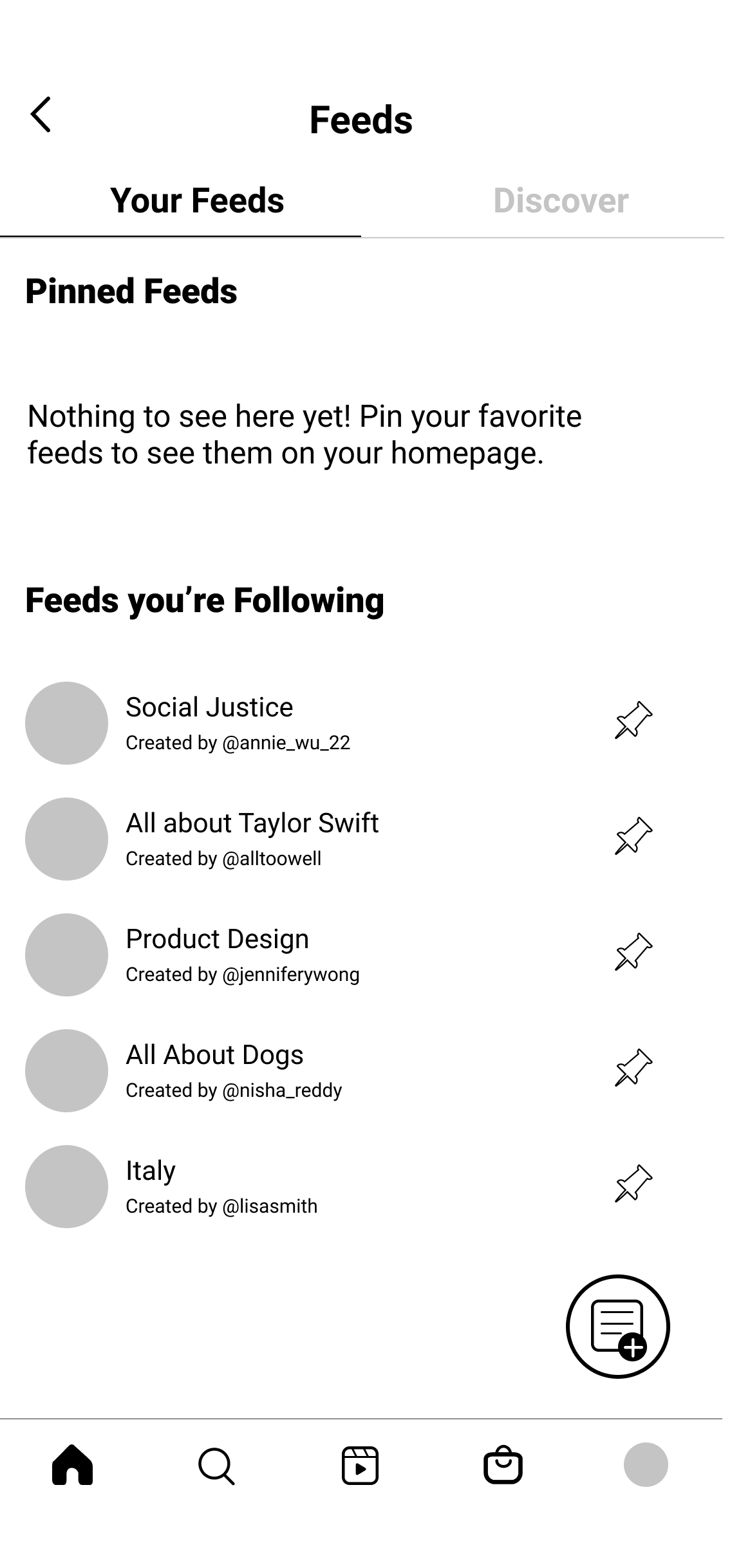
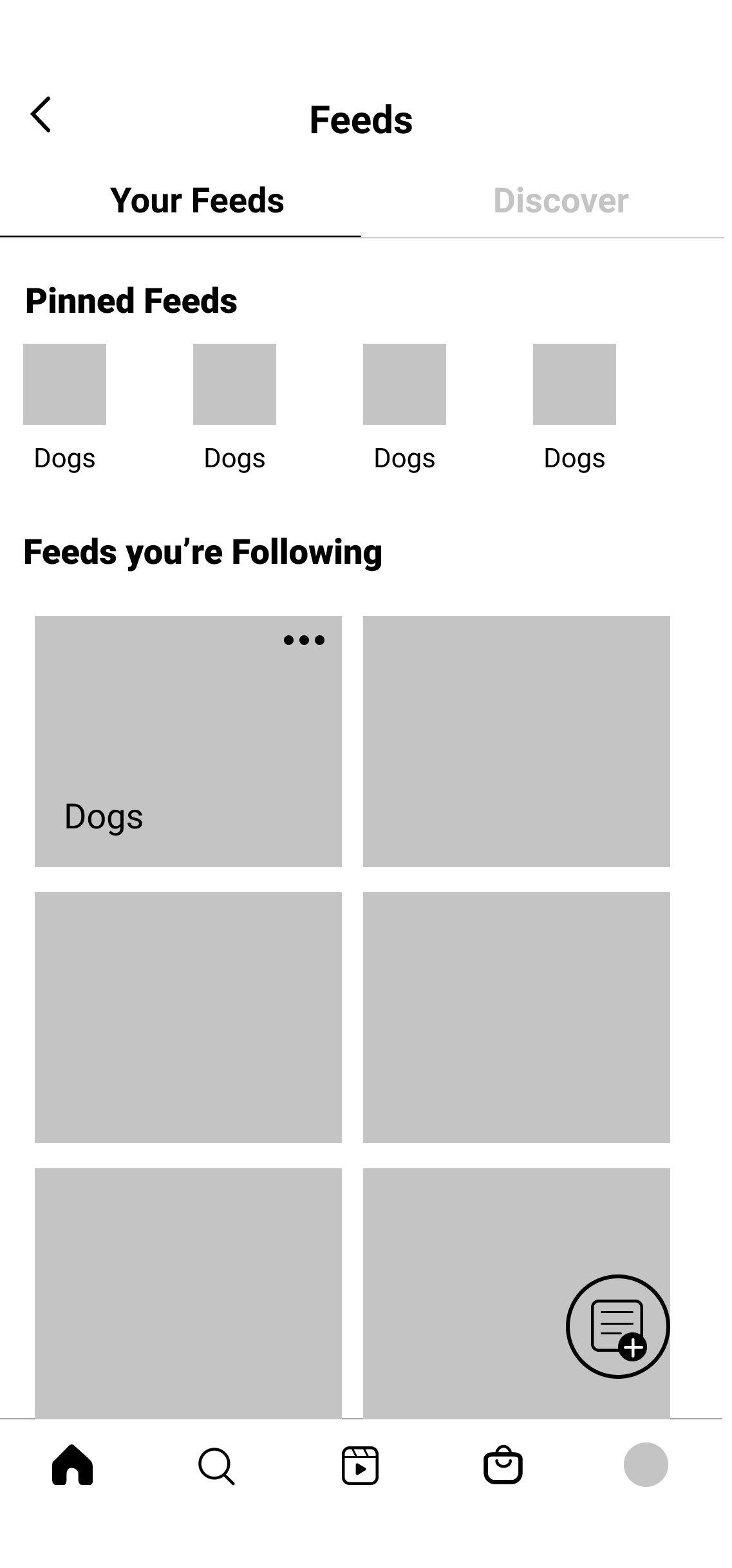
I moved forward with Option B because the information architecture made relevant content more accessible, which would encourage more engagement.
If Instagram were to release this feature today, could people effectively and easily find and create curated content? In usability testing of 5 social media users, I asked what they thought ‘feeds’ were and asked what they would do next (discover feeds or create one).

Although many people didn't know what feeds were at first, the Discover page helped give them more context

Many people associated the idea with hashtags at first, but were able to see the full purpose and value in it after seeing the feature as a whole
People had difficulty understanding what 'accounts' meant for each feed
I added an information icon to provide more clarity
People didn't expect to see feeds they create to be grouped with 'Feeds you're following'
I revised the information architecture to separate these elements since they’re different from one another.
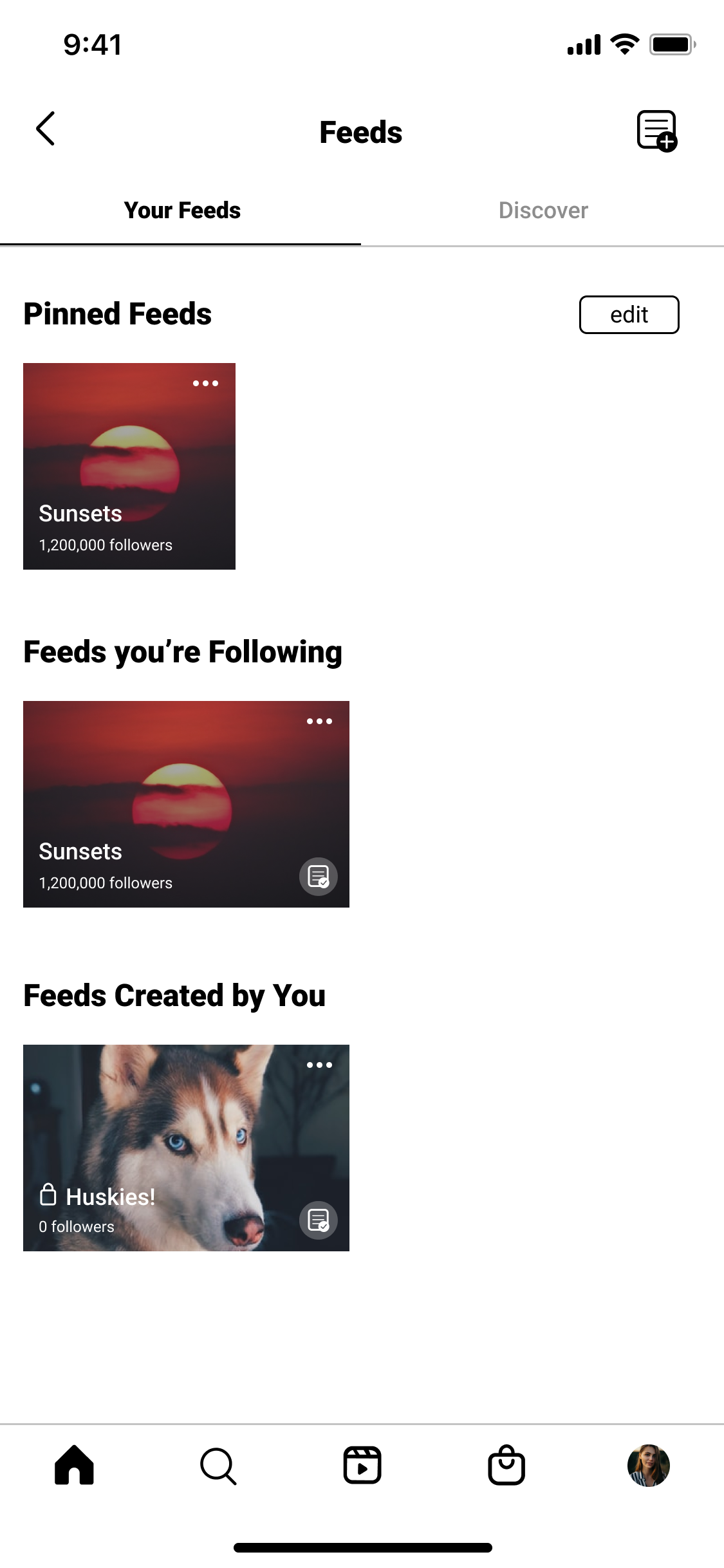
People felt a little overwhelmed on the 'Add to Feed' page with too many suggested accounts being listed
I reorganized suggested accounts into a carousel with the option to see all.

In the initial release of this feature, users will be able to create feeds publicly & privately first. Public feeds can be searched across Instagram. Private accounts will require permission to be added to a feed.
If there is an adoption of curated feeds, the next milestone will be to add the Discover tab and pinning feature. These will help people browse and manage the influx of new feeds.

Although I don't work for Instagram and cannot launch this MVP, there are still KPI's I could set to measure the success of the MVP:

Increase percentages of engagement (likes, comments, sharing) by x%

x people have been engaging with feeds they created

x people have interacted with feeds they’re following
These metrics could help indicate whether the curated content feature is sucessful.
The greater vision of social media lies in the future of AI and how it plays a role in selecting and displaying content to optimize engagement. In 2019, the Senate had a hearing about Persuasive Technology and who should be held accountable when algorithms make moral mistakes that affect millions of people. For example, The New York Times reported that Youtube's Automated Recommendation System was suggesting family videos to pedophiles.
When speculating possible solutions, Dr. Stephen Wolfram brought up a compelling idea of writing a contract that has guidelines that determines what AI is allowed to do. He calls these 'computational contracts' that are written in a computational language in which the AI can interpret. The real question is who is responsible for writing these guidelines? Wolfram referred to these guidelines as an 'AI Constitution' and stressed how important it was that it was done correctly.
The future of Instagram can be based on healthier guidelines, and curated feeds are one step in that direction.
Although I chose an ambiguous and broad problem space, I learned that the solution doesn’t need to be innovative to make an impact. I think oftentimes as a junior designer, it seems more compelling to create more as if it achieves more, but that is not the case. What’s more compelling is how you went about solving the problem and continuously thinking about the user and business impacts throughout.